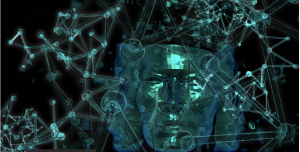In my research on how technology and digital media are used by Indigenous people, I found the following articles:
Oppenneer, M. (2009). Using ICTs for indigenous cultural preservation: Challenges and strategies. Ethnos Project. (Link)
The importance of Indigenous knowledge and its contribution to our global society has been recognized recently. We now know that we need to acknowledge the value and significance of Indigenous knowledge to protect it and use it in our global problem-solving plan. In our modern world, however, the most accessible method to do so is to use digital technology and multimedia. That, as Oppeneer (2009) discusses, would impose challenges for Indigenous communities, which can result in the digital divide and inequity.
“Challenges can arise when there is disharmony between the design of the technology and the knowledge traditions of the Indigenous communities using the technology.”
One challenge is the fact that these technologies have been designed with western values and are not associated with the traditional values of Indigenous people.
“Indigenous people are a poor match for technologies that “reflect Western values of individualism, the privileging of texts and the commodification of knowledge, trends that run counter to and likely many indigenous traditions.”
That’s what is mostly known as “computer-mediated colonization”. Ess and Sudweeks (2012) discuss that many computer-based technologies were built based on the cultural values and beliefs of their builders. They will carry their original properties with them when we integrate them into new environments. They wouldn’t probably fit in a community with different cultural backgrounds, so we are faced with digital colonization.
Oppeneer (2009) explains three different projects tested in Australia “to show how the disharmony between the technology and tradition can be addressed.”
One of these projects is organizing digital materials reflecting the cultural identities of the Warumungu Aboriginal community. This project was supposed to “provide a free and open source community archive platform that provides international standards-based content management tools adaptable to the local cultural protocols and intellectual property systems of indigenous communities, libraries, archives, and museums.” You can find more information about it here.
I think these types of projects would help the Indigenous communities to find and share their voice and preserve their culture in the digital world.
“For Indigenous communities willing to embrace ICTs, change is part of the new reality. Change means new technologies, new formats, and new expectations. For such communities, embracing this change will be vital to maintaining tradition in the modern age. It can become a critical aspect for the reintegration of knowledge back into the community.” (Oppeneer, 2009)
Reference
Ess, C., & Sudweeks, F. (2012). Foreword. In P. H. Cheong, J. N. Martin & L. P. Macfadyen (Eds.), New media and intercultural communication. Identity, community and politics (pp. xi –xx). New York: Peter Lang.


